Thailand << TY land >> is a country in tropical Southeast Asia. The people of Thailand are called Thai. In the past, Thailand was primarily an agricultural country. Today, about half of all Thai live in rural areas. However, Thailand has a rapidly developing economy, and its urban centers have expanded at a fast pace. More than 8 million people live in the city limits of Bangkok, Thailand’s capital and largest city.
Thailand is the only nation in Southeast Asia that has never been ruled by a Western power. For most of its history, the country was called Siam. In 1939, it officially adopted the name Thailand.
Government
National government.
Thailand is a constitutional monarchy, a form of government in which the constitution limits the power of the king or queen. In 2017, a new constitution that guarantees the military a role in government came into effect. The Constitution provides for a monarch, a prime minister, and a parliament (legislature) called the National Assembly. The National Assembly consists of a House of Representatives, with members elected to four-year terms, and a Senate, with members appointed by the military to five-year terms. The House and Senate together select the prime minister, who is formally appointed by the monarch. The monarch has an advisory role as head of state, and the prime minister heads the government. The prime minister is limited to two terms in office.
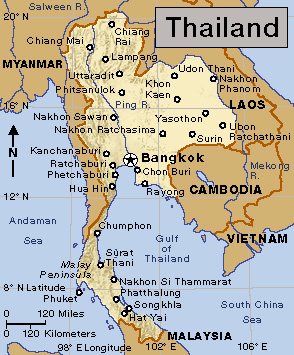

Thailand national anthem
Local government.
Thailand is divided into 76 provinces. The provinces are subdivided into districts, local units called tambons, and villages. Each province has a governor, and every district has a district officer. These officials are appointed by the minister of the interior. Thai villages range in size from a few hundred to a few thousand people. Each village elects a headman to be its leader. The people in each tambon then select from among the village headmen a kamnan, or chief administrator, for their tambon. The people in each tambon also elect the members of a Tambon Administrative Organization.
Politics.
Thai citizens 18 years old or older are required to vote. Thai political parties often have been organized around leaders rather than common political philosophies, and few parties have had lasting strength.
Courts.
The Supreme Court of Justice is the highest court. The entire court meets only for special cases. The Court of Appeals, the second highest court, reviews decisions of lower courts. A panel called the Judicial Commission chooses all Thai judges. The judges are formally appointed by the king.
Armed forces
of Thailand consist of an army, a navy, and an air force. Men from 21 to 30 years old may be drafted for at least two years of military duty. Women may serve on a voluntary basis.
People
Ancestry.
Most of Thailand’s people belong to the Thai ethnic group. The ancestors of the Thai migrated from southern China over a period of several centuries beginning more than 1,000 years ago. At various times, other peoples also came to the area as migrants, war prisoners, or refugees. These peoples included Mons, Khmers, Indians, Vietnamese, and Malays. Most descendants of these groups now consider themselves Thai.
During the 1800’s and 1900’s, many Chinese came to Bangkok and other cities and towns. They often intermarried with the Thai and adopted local customs. Many of them now think of themselves as Thai of Chinese descent. Small, isolated groups, such as the Hmong, Karen, and Lua, live in the hills of the north and northwest.
Way of life.
About half of Thailand’s people live in rural areas, mainly in small villages. Each Thai village has a wat (Buddhist temple-monastery) that is the religious and social center of the community. Village life in Thailand traditionally has been organized around religious and agricultural rituals and festivals. But now radio and television also have a strong influence.
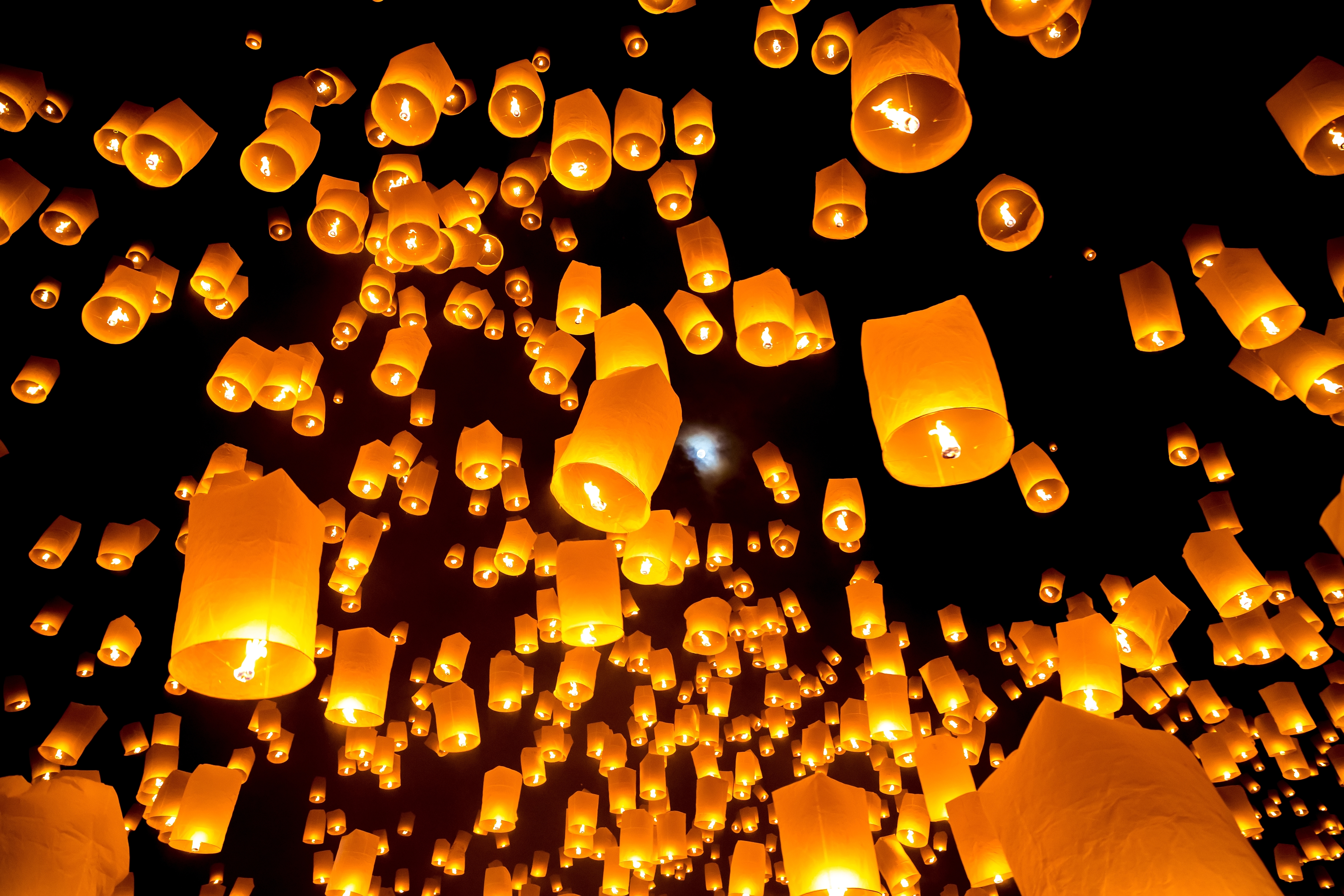
Since the early 1960’s, large numbers of Thai—especially young adults—have moved from rural areas to cities in search of jobs and educational opportunities. A middle class has emerged in the cities and their suburbs. Many middle-class Thai work in modern office jobs. However, others who have come to the cities work in low-paying factory jobs. Many lower-class Thai live in slums. The rapid city growth has created problems, including crowded living conditions, traffic jams, pollution, the growth of prostitution, and the spread of AIDS.
In the past, Thai people wore simple, light clothing suitable for a tropical climate. Today, most Thai wear the same clothing styles worn in Europe and North America. Some people wear clothing made of Thai silk or of batik (a cloth dyed using a special process). Some people wear clothing decorated with traditional Hmong or Karen embroidery. 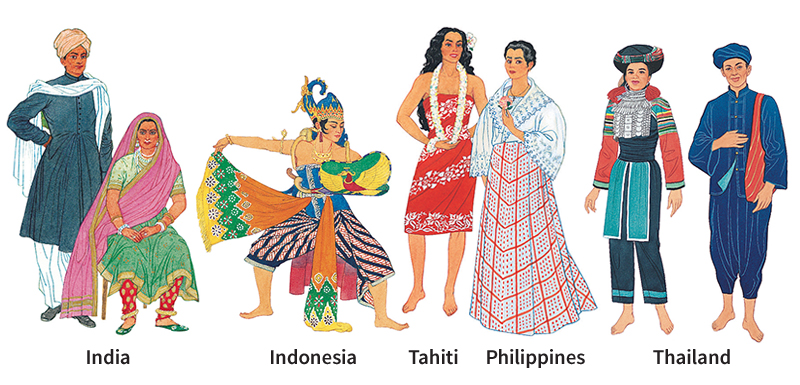
Housing.
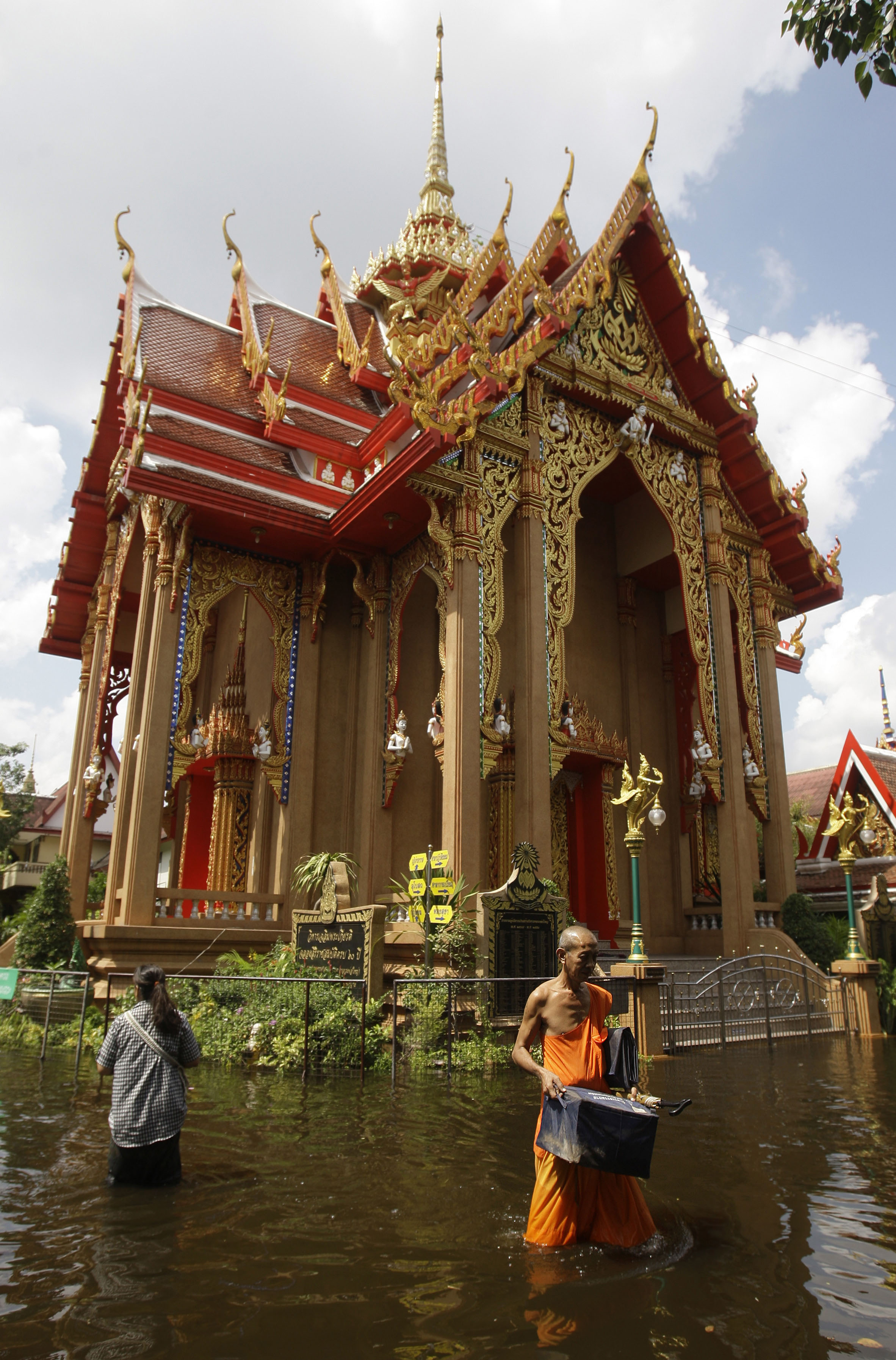
Many villagers live in wood houses that are on stilts. The houses are built 7 to 10 feet (2 to 3 meters) above the ground mainly for protection against floods. In towns, some shop owners, especially Chinese, live in rows of two-story brick buildings. They work in shops on the first floor and live on the second. Middle-class Thai, especially in Bangkok and its suburbs, live in apartments or large developments of single-family homes.
Food.
Thai people eat rice with almost every meal. Favorite foods to accompany the rice include hot, spicy stews called curries; salads of meat, fish, and vegetables; stir-fry dishes; and broiled or fried fish with sauces. Noodles are also popular, especially for lunches.
Recreation.
Thai people prize the art of sanuk, or having fun. The national sport is Muay Thai (Thai boxing), also known as kickboxing, in which opponents fight with their feet as well as their hands. In another popular sport, called takraw, the players try to keep a ball made of rattan (woven palm stems) in the air by using their head, legs, and feet. Soccer is also popular.
Languages.
Thai, the language spoken by almost all people in Thailand, has four main dialects. The Central Thai dialect is the official language and is taught in the schools. Many people speak this dialect in addition to their own regional or ethnic dialect. Many people also speak Malay or Chinese. English is taught in many schools and is often used in business and government.
Religion.
About 95 percent of the Thai people are Buddhists. Most Thai follow the Theravada (Way of the Elders) tradition, a form of Buddhism that emphasizes the virtues of monastic life. According to custom, many Thai men become monks for at least a short time, from about one week to several months. They wear yellow robes and lead lives of simplicity, meditation, and study. 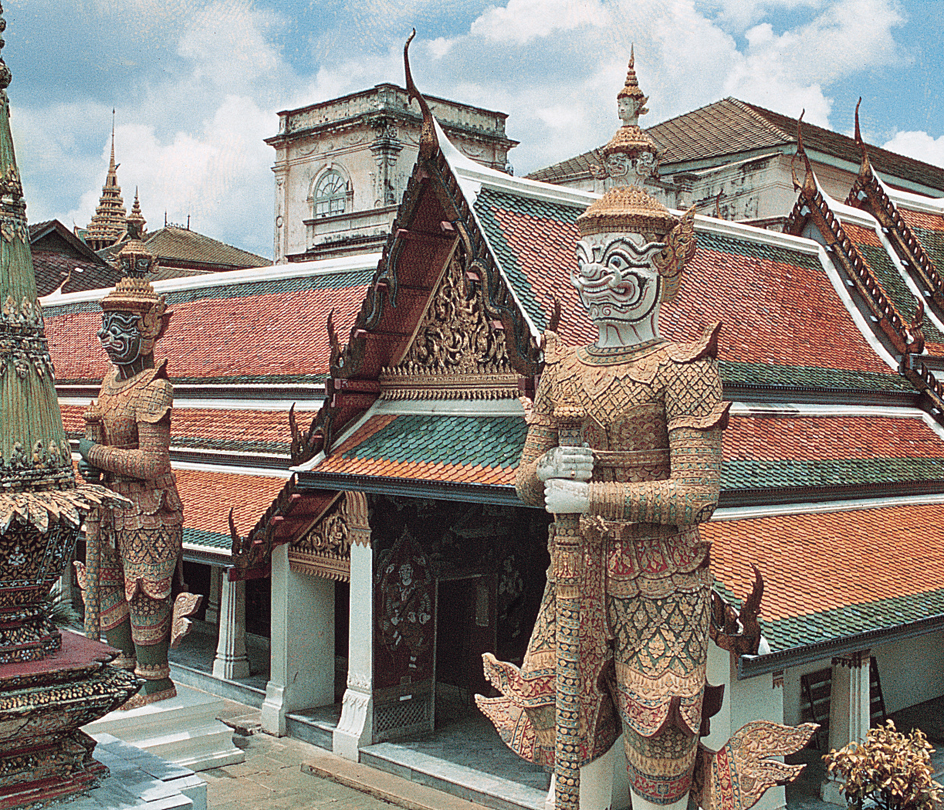
Most Chinese in Thailand follow Confucianism in addition to practicing other religions. About 5 percent of Thailand’s people are Muslims. Most of the Muslims are Malays living in the south or in Bangkok.
Education.
Thai law requires children to attend school from age 6 to 14. The government provides free public elementary and secondary education, but some students attend private schools. Thailand has more than 20 public universities and more than 40 private universities. Almost all of Thailand’s adult population can read and write.
The arts
in Thailand are greatly influenced by Buddhism. Buddhist temples display some of the finest Thai architecture. The image of Buddha appears in many Thai paintings and sculptures. Modern Thai painting features traditional religious themes and international styles. 
Most traditional Thai literature was written as poetry or as drama and performed for the royal court. Some dramas were shadow plays performed with puppets (see Puppet (Shadow puppets)). Other dramas were performed by classical dancers wearing masks and spectacular costumes. The stories came from such legends as the Ramakian, the Thai version of the Ramayana, a great epic poem of India. Today, Thailand’s people enjoy motion pictures and television shows.
Early Thai folk musicians traveled to villages and festivals and performed songs and ballads. Today, Thai folk music remains popular. Traditional musicians in the northeast still play a mouth organ made of bamboo pipes known as a khaen. In addition, some folk music has been adapted into modern Thai pop music.
The land
Thailand has four main land regions. They are (1) the Mountainous North, (2) the Khorat Plateau, (3) the Central Plain, and (4) the Southern Peninsula.
The Mountainous North.
Mountains occupy part of northern Thailand and extend along the country’s western border to the Malay Peninsula. Inthanon Mountain, Thailand’s highest peak, is in this region. The mountain rises 8,514 feet (2,595 meters) above sea level. Forests of evergreen trees and some broadleaf trees, such as teak, cover most of the region. The mountains are broken by rivers running south. These rivers form narrow, fertile valleys where farmers grow rice and other crops.
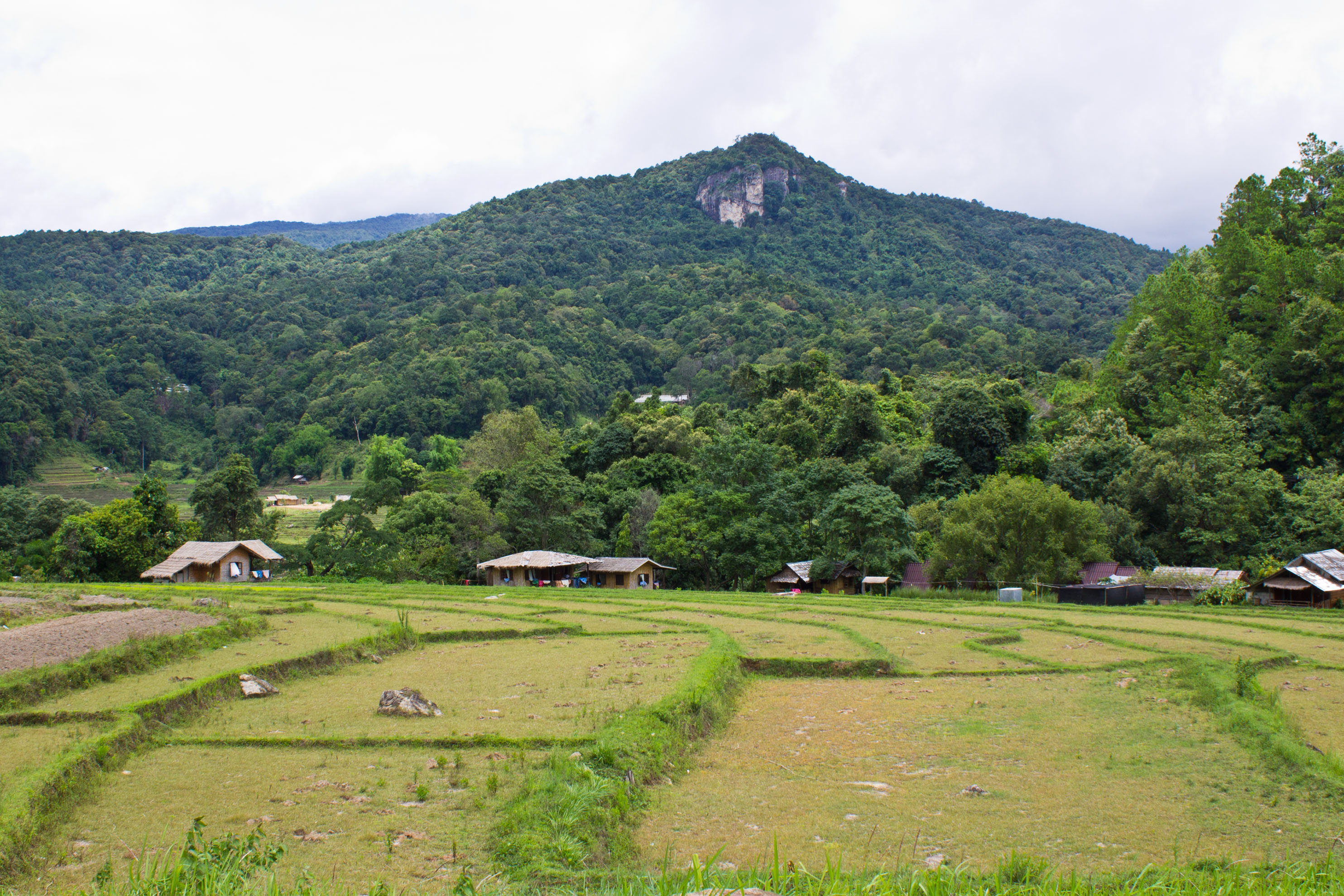
The Khorat Plateau,
also known as Isan, lies in northeastern Thailand and makes up about one-third of the country’s land area. Mountains separate the plateau from central Thailand to the west and Cambodia to the south. The Mekong River forms the region’s northern and eastern boundaries. Two other rivers, the Chi and the Mun, also run through the region. But generally, the area is dry with sandy soil that makes poor farmland.
The Central Plain
extends from the foothills of the north to the Gulf of Thailand. Its soil is so fertile that farmers raise more rice there than anywhere else in the country. Thailand’s main river, the Chao Phraya << chow PRY uh or chow prah YAH >>, runs through the region and provides irrigation and transportation.
The Southern Peninsula
shares its northwestern border with Myanmar and extends south to Malaysia. The center of the peninsula consists mainly of jungle and mountains. Narrow plains run along the coast. Fishing, rubber production, and tin mining in the region contribute much to the Thai economy.
Animal life.
Thailand’s forests once abounded with elephants, tigers, wild pigs, deer, crocodiles, king cobras and other snakes, and many varieties of birds. But since the mid-1900’s, many species of wildlife have become endangered. Thousands were hunted and killed for profit before the practice was made illegal. Also, agriculture, logging, and industry have destroyed more than half of Thailand’s forest area since the mid-1900’s.
Climate
Thailand has a tropical climate. Most of the country has three seasons—a hot, dry season from March to May; a hot, wet period from June to October; and a cool, dry season from November to February. Bangkok has an average temperature of 77 °F (25 °C) in December and 86 °F (30 °C) in April. The mountain areas are cooler.
From late May to October, winds called monsoons cause heavy rains throughout Thailand. The Southern Peninsula region may receive more than 100 inches (254 centimeters) of rain in one year. Bangkok has an average annual rainfall of 55 inches (140 centimeters).
Economy
The Thai economy is based on free enterprise, in which businesses operate largely free of government control. In the past, the main economic activities were agriculture and forestry, especially the harvesting of teak. But the economy is changing rapidly. Today, agriculture and fishing make up only about 9 percent of the country’s gross domestic product (GDP), the value of all goods and services produced in the country in a year. Manufacturing makes up about 27 percent of the GDP, and service industries make up about 55 percent. Thailand has one of the world’s lowest unemployment rates. However, the gap between the rich and the poor in Thailand is among the largest in the world.
Agriculture.
Farmland makes up about 40 percent of the nation’s land. About 40 percent of Thailand’s workers are farmers. The chief crop is rice. Thailand is one of the world’s largest producers and exporters of rice. Thailand is also one of the world’s leading producers of cassava (a potatolike plant used to make tapioca), coconuts, mangoes, natural rubber, palm oil, pineapples, and sugar cane. Thailand’s other major crops include bananas and corn. Farmers also raise cattle, chickens, and hogs. The majority of farmers own their land.
Manufacturing,
particularly textile production, first gained importance in Thailand in the 1970’s. Other leading manufactured products include automobiles, cement, computer parts and other electronic and electrical goods, motor vehicle parts, processed foods, and steel. Since the mid-1980’s, many foreign companies have built factories in Thailand to make products for export.
Fishing
has always been a mainstay of the Thai economy. Throughout the country, people catch fish for local consumption and sale. Commercial fisheries in the south and southeast fish by trawling, pulling a funnel-shaped net through the sea. Leading fishing catches include anchovies, mackerels, sardinellas, scad, and tuna. Some farmers convert their land into ponds to raise fish and shrimp. 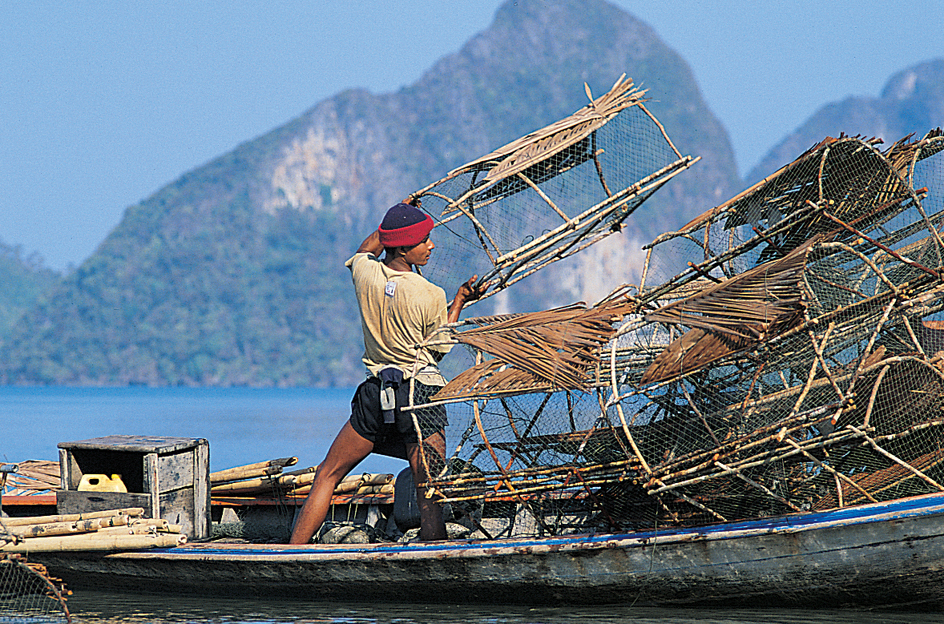
Mining.
Mining plays an important role in Thailand. The country mines feldspar, gold, gypsum, kaolin, lead, lignite, limestone, rock salt, silver, tin, tungsten, and zinc. Wells in the Gulf of Thailand produce natural gas and petroleum.
Tourism
contributes greatly to Thailand’s national income. Millions of tourists visit each year to see the country’s magnificent temples, interesting historical sites, beaches, and exciting night life. Many of these tourists come from China, Japan, Malaysia, and South Korea.
International trade.
Thailand’s chief exports are industrial products, especially automobiles, clothing and textiles, electrical and electronic goods, and machinery. Fish products and rice are also important exports. The major imports include crude oil, electronics, iron and steel, and machinery. Much of Thailand’s trade is with China and with other countries in Southeast Asia. Japan and the United States are also important trading partners.
Transportation.
Most people in Thailand travel by road. Major highways link the nation’s cities. Almost all villages can be reached on a paved road. Small motorcycles are popular. There is a railroad system, but it is less developed than the road system. 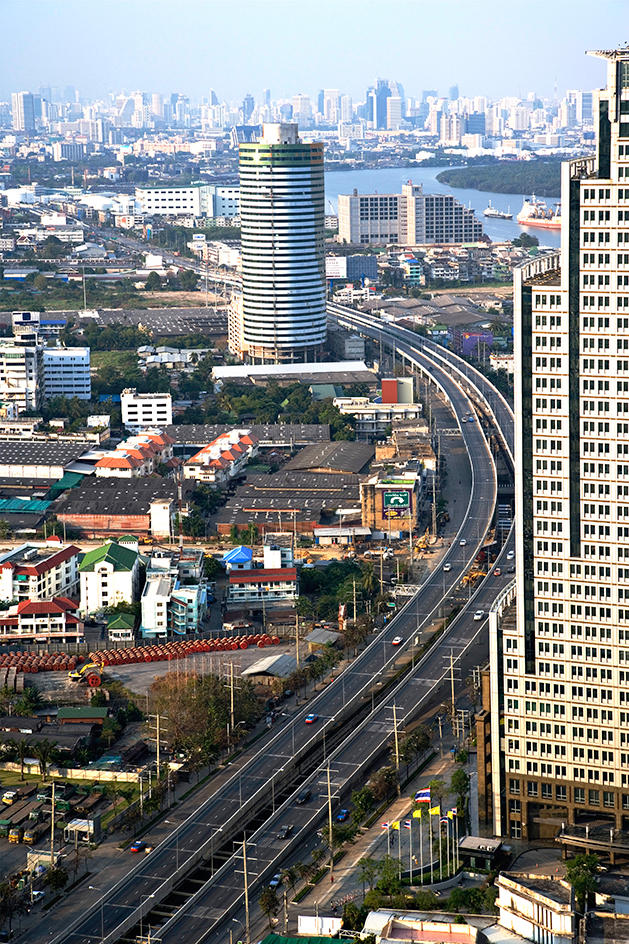
Bangkok has become famous for traffic jams. Because of poor planning, not enough space is devoted to roads. The city has an elevated railroad and a subway system. Bangkok is Thailand’s largest and busiest port. The city’s international airport is the nation’s main airport.
Communication.
Thailand has dozens of daily newspapers. Most of them are published in the Thai language. Some newspapers are published in Chinese or English. Most newspapers are privately owned. Thailand’s government and military control much of the country’s radio and television broadcasting.
History
Early years.
People have lived in what is now Thailand for tens of thousands of years. The Mon and the Khmer peoples had settlements throughout Southeast Asia more than 2,000 years ago. Some scholars believe they originally migrated there from southern China. Before A.D. 1000, many small states were scattered throughout the region. Little is known about them other than their names. One, named Dvaravati << duh vahr uh VAH tee >>, was a Mon state based in the delta of the Chao Phraya River. Foreign traders brought Buddhism and Hinduism to the region from India. The ancestors of today’s Thai migrated to the region from southern China over a period of many centuries, beginning between about the A.D. 400’s and 700’s.
Early kingdoms.
From 1200 to 1400, several kingdoms arose in the region. The capitals of the main kingdoms were Chiang Mai, Sukhothai, and Ayutthaya.
Chiang Mai << chee AHNG my or jee AHNG my >> was in the hills of the north. Its great king, Mangrai << mehng ry >>, founded the city in 1296 as the capital of the Lan Na kingdom. Chiang Mai became an important religious, cultural, political, and commercial center.
Sukhothai << soo KOH ty >> was founded in 1238 between the hills and the central plain. The city was a Buddhist center with many skilled craftworkers. A ceramic industry based in and near Sukhothai exported products to many parts of eastern Asia. Sukhothai’s famous ruler, King Ramkhamhaeng << rahm kahm HANG >>, reigned from about 1279 to 1317. Many historians believe he may have developed a writing system for the Thai language.
Ayutthaya << ah YOOT tah yah >>, sometimes spelled Ayudhya, was established in 1351 on an island in the Chao Phraya River, an ideal place for trade and defense. U Thong founded the city and became its first king, taking the name Ramathibodi << rahm uh tee BOH dee >>. Ayutthaya was the most important of a group of trading cities around the Gulf of Thailand. The city’s early population probably included not only Thai but also Khmer, Chinese, and other groups.
The rise of Ayutthaya.
In the late 1300’s and early 1400’s, Ayutthaya gained control over much nearby territory, including the lands of the Sukhothai kingdom. Between 1400 and 1600, Ayutthaya became the region’s leading power, mainly because of its trading wealth. At the same time, its population gradually became mainly Thai. Most of Ayutthaya’s people were forced to serve in the armies and work for the kings and nobles.
By 1500, Ayutthaya was one of Asia’s great trading centers. Many foreign traders settled there. The Chinese came first, followed by people from Arabia, Iran (at that time, also called Persia), India, and Japan. In 1511, Portuguese merchants became the first Europeans to establish trade relations there. Other Europeans followed. About the 1630’s, the Dutch became the main European community in Ayutthaya. The foreigners included not only traders but also missionaries, mercenaries (soldiers for hire), engineers, and doctors. King Narai, who led Ayutthaya from 1656 to 1688, sent representatives to China, France, Iran, the Netherlands, and other countries.
Ayutthaya fought frequent wars with its neighbors—the Khmer to the east and the Burmese to the west. In 1767, the Burmese destroyed the city of Ayutthaya.
The Bangkok era.
For a few years, there was famine and disorder. Several men competed for power. The victor was a military leader named Taksin. He moved the capital to Thon Buri, close to Bangkok on the west bank of the Chao Phraya. He brought in Chinese traders and migrants to help rebuild the economy, and he expelled the Burmese. He reunited the lands that had been part of the Ayutthaya kingdom and gained control of Chiang Mai. In 1782, a group of old Ayutthaya nobles overthrew Taksin. Their leader, Chaophraya Chakri << chow PRY uh CHAHK ree or chow prah YAH CHAHK ree >>, became King Rama I and began the Chakri dynasty (line of rulers), which still reigns today. Chakri moved the capital across the Chao Phraya to Bangkok. He ruled until 1809.
In the late 1700’s and the 1800’s, the economy grew. Many Chinese moved to Siam—the name Europeans used for the Bangkok kingdom—because of famine and revolts in China. The Chinese set up sugar processing facilities and other businesses. More Thai became independent farmers. They turned additional land into rice farms. Siam began to export rice and sugar. British, American, and other Western traders came to Bangkok. The Western powers began to seize lands in Southeast Asia as colonies. The British seized portions of Malaya (now part of Malaysia) and Burma (now Myanmar). The French seized parts of Vietnam, Cambodia, and Laos.
Modernization.
Siam’s kings and nobles feared becoming a Western colony. They also were impressed by some Western ideas and by Western technology, such as steam-powered ships. They decided to cooperate with Western powers and adopt Western practices that they thought would be useful. Reforms began under King Mongkut << mawng KOOT >>, also called Rama IV, who ruled from 1851 to 1868. He studied Western languages and science. His government signed treaties with Western powers that expanded trade. He also hired Western advisers who helped modernize the government.
King Chulalongkorn << chu lah LAWNG kawn >>, also called Rama V, reigned from 1868 to 1910. He is regarded as one of Siam’s greatest kings. He reorganized Siam’s government, introduced a modern school system, and built railroads and telegraphs. He abolished old systems of controlling people, allowing them to become independent farmers or enter other occupations. Rice exports increased greatly. Western firms were allowed to set up tin mines and timber companies.
The United Kingdom and France both threatened to colonize Siam. But neither country would let the other establish control, and so Siam was never colonized.
Changes in government.
In 1932, a group of Thai, many of whom had been educated in Europe, staged a revolution. They forced the king to change the government from an absolute monarchy to a constitutional monarchy. Pridi Phanomyong << pree dee pah nawm yawng >>, a lawyer, and Phibun Songkhram << pee boon sawng krahm >>, an artillery officer, led the revolt. A parliament was established. The king was still head of state, but a prime minister now headed the government.
After the coup, a civilian government initially ruled Siam. But from 1933 to 1938, the military increased its power. Phibun became prime minister in 1938 and ran a military government. The country’s name was changed to Thailand in 1939.
In World War II (1939-1945),
Germany, Japan, and other Axis powers fought the Allies, which included China, the Soviet Union, the United Kingdom, and the United States. Japan invaded Thailand in 1941. Japan planned to use Thailand as a base to attack Burma, Malaya, and Singapore, three countries then under British rule. At first, Thailand resisted. But Phibun decided to cooperate, and Japan took over Thailand’s harbors, airports, and railroads. As the war progressed, many Thai began to resent Japanese control. The Thai economy suffered. In 1942, some Thai officials began a Free Thai Movement to work against Japan. The Free Thai gained influence in the Thai government. The National Assembly forced Phibun out of office in 1944. From 1944 to 1947, Thailand had civilian governments led by Pridi and people from the Free Thai. But the military remained strong.
In 1946, Bhumibol Adulyadej << POO mee pawn ah DOON yah deht >>, also called Rama IX, became king. Bhumibol’s name is also spelled Phumiphon Adunyadet.
Military rule.
In 1947, some military officers staged a coup. They soon established a military dictatorship in Thailand. Phibun and a series of other military leaders then ruled the country until 1973. Worldwide, this period marked the height of the Cold War, an intense rivalry between Communist and non-Communist nations. Thailand allied itself with the non-Communists, led by the United States. The United States provided Thailand with much economic and military aid, and Thailand allowed the United States to use military bases on Thai territory. The United States used these bases to attack Communist forces in North Vietnam, Cambodia, and Laos during the Vietnam War (1957-1975). Also during this war, Thailand sent troops to fight on the side of the United States.
Democracy gains strength.
In 1973, university students in Thailand led a successful revolt against the military government. They demanded democratic rights and an end to dictatorship. For the next three years, Thailand experimented with parliamentary democracy. However, in October 1976, the military again seized power. Numerous student protesters were killed, and many others fled to the jungle, where they joined Communist forces.
From 1976 to 1988, the military maintained control of Thailand but gradually allowed a parliament to have more power. General Prem Tinsulanonda << praym TIHN soo lah nawn >> became prime minister in 1980. His government enacted policies to reduce poverty and stimulate economic growth.
Beginning in the mid-1980’s, Thai government policies encouraged companies to set up factories for the production of export goods. Many firms from Japan, South Korea, and Taiwan built such factories. For the next 10 years, Thailand had one of the world’s fastest growing economies. But the government failed to manage this growth well. The environment suffered damage, and the gap between the rich and poor widened.
In 1988, Prem retired, and an elected government took control of the nation. In 1991, some military officers again seized power. But in May 1992, hundreds of thousands of people demonstrated in the streets of Bangkok against the military government. Later that year, parliamentary elections were held and a group of civilian parties was elected to a new National Assembly.
Recent developments.
In 1997, Thailand adopted a new constitution. That same year, Thailand’s economy suffered a severe slump. Many businesses went bankrupt. Millions of Thai lost their jobs and fell into poverty.
In 2001, the Thai Rak Thai (Thai Love Thai) party won parliamentary elections. Party leader Thaksin Shinawatra << TAHK sihn shih nah WAHT >>, whose name is also spelled Thaksin Chinnawat, became prime minister. His government worked to revive the economy, which began to improve.
In December 2004, a powerful undersea earthquake in the Indian Ocean near the Indonesian island of Sumatra generated a series of large ocean waves called a tsunami. The tsunami’s towering waves killed about 228,000 people in areas of Asia and Africa bordering the Indian Ocean. It also left millions of people homeless and caused billions of dollars of property damage in the region. In Thailand, about 8,000 people were killed along the country’s southwestern coast. 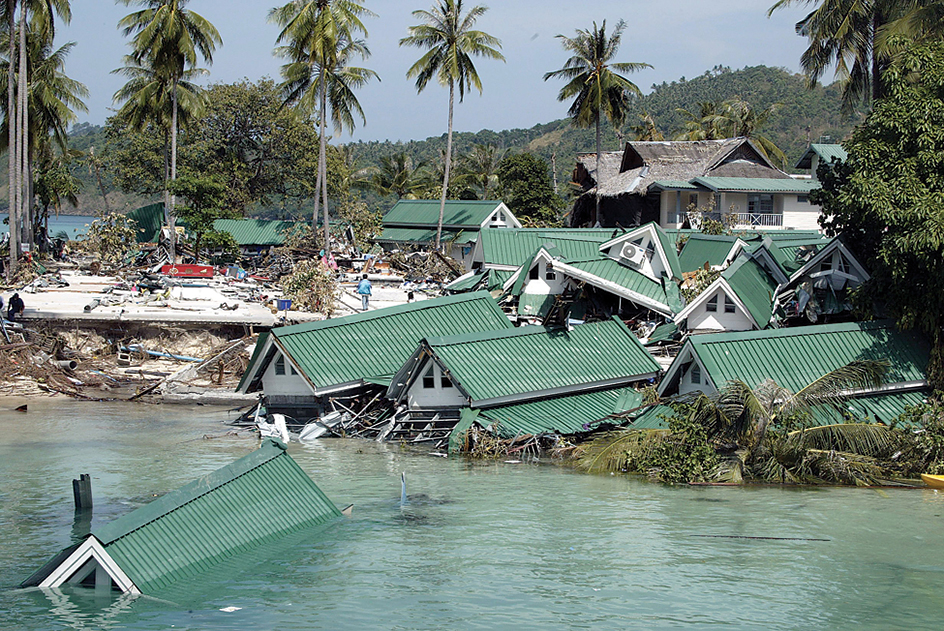
In February 2005, Thai Rak Thai again won parliamentary elections, and Thaksin remained prime minister. In February 2006, mass demonstrations began against Thaksin after his family sold their shares in a multimillion-dollar business to Singapore. Thaksin called for early parliamentary elections, which were held in April 2006. Thai Rak Thai won the most seats, but opposition parties boycotted the elections, and the Constitutional Court ruled the election results invalid. Thaksin remained prime minister, and new elections were scheduled for later that year. However, in September 2006, a military coup (revolt against the government) overthrew Thaksin and called for the drafting of a new constitution. The general who led the coup said that, within a year, a temporary government would write a new constitution and hold elections. In October, the military approved a temporary constitution. They also appointed Surayud Chulanont, a retired general, as prime minister and appointed a temporary government. In April 2007, a government committee drafted a constitution. In August, voters approved the new constitution in a referendum.
Thailand held parliamentary elections in late December. The People’s Power Party (PPP) won the most seats, but not enough for a majority. It formed a coalition with five other parties. In January 2008, the new parliament elected Samak Sundaravej, leader of the PPP, as prime minister. In September, the parliament removed Samak from office after he broke conflict-of-interest rules. Parliament elected Somchai Wongsawat to replace him as prime minister. However, protests against the PPP grew over the next few months, eventually shutting down two airports near Bangkok and affecting the economy. In December, the country’s Constitutional Court dissolved the PPP. On December 15, the parliament elected Abhisit Vejjajiva as prime minister.
Antigovernment protesters, mostly Thaksin supporters, occupied a central area of Bangkok beginning in March 2010. They claimed the government was illegitimate and demanded Abhisit step down and call immediate elections. The protesters constructed barricades and remained in the city for weeks. The protests led to standoffs with army troops that soon led to violence in which more than 80 people were killed. In May, several protest leaders surrendered to authorities to prevent further violence. The army forced the remaining protesters from the encampment. Some protesters remained in Bangkok, setting fire to buildings and continuing to battle with army troops. In late May, Abhisit claimed that order had been restored.
In July 2011, Thaksin’s sister, Yingluck Shinawatra, led the Pheu Thai Party to victory in parliamentary elections. She formed a multiparty coalition and became the country’s first woman prime minister. However, international observers suspected that Thaksin, who was living in exile, was directing the government from abroad.
In late 2013, Yingluck’s government proposed a bill that would have granted Thaksin amnesty and allowed him to return to the country without having to face trial for corruption. Thousands of people protested against the bill. They demanded that Yingluck step down and argued that she should be replaced by a council tasked with reforming the country’s political system. Instead, Yingluck dissolved parliament and called for elections in early 2014. The protesters continued their call for reform. Parliamentary elections were held in February, but the opposition refused to participate. The country’s Constitutional Court later annulled (canceled) the results of the February vote. In May, the Constitutional Court convicted Yingluck of abuse of power and ordered her to step down. Protests continued.
Later in May, members of the military again seized power. The junta, a small group that took over the government, issued an interim constitution and appointed an interim legislature. This legislature elected coup leader General Prayuth Chan-ocha as prime minister. In 2015, the interim legislature voted to impeach Yingluck on charges of corruption stemming from her involvement in a government program to subsidize rice farming. In mid-2017, Yingluck fled the country. She was sentenced in absentia (while absent) to five years in prison for criminal negligence.
King Bhumibol Adulyadej died in October 2016. His son, Crown Prince Maha Vajiralongkorn, was proclaimed king in December. However, the new king announced that he would delay his coronation until after his father’s cremation. In October 2017, the late king was cremated in an elaborate ceremony, ending a year of mourning. The formal coronation of Vajiralongkorn took place in May 2019. 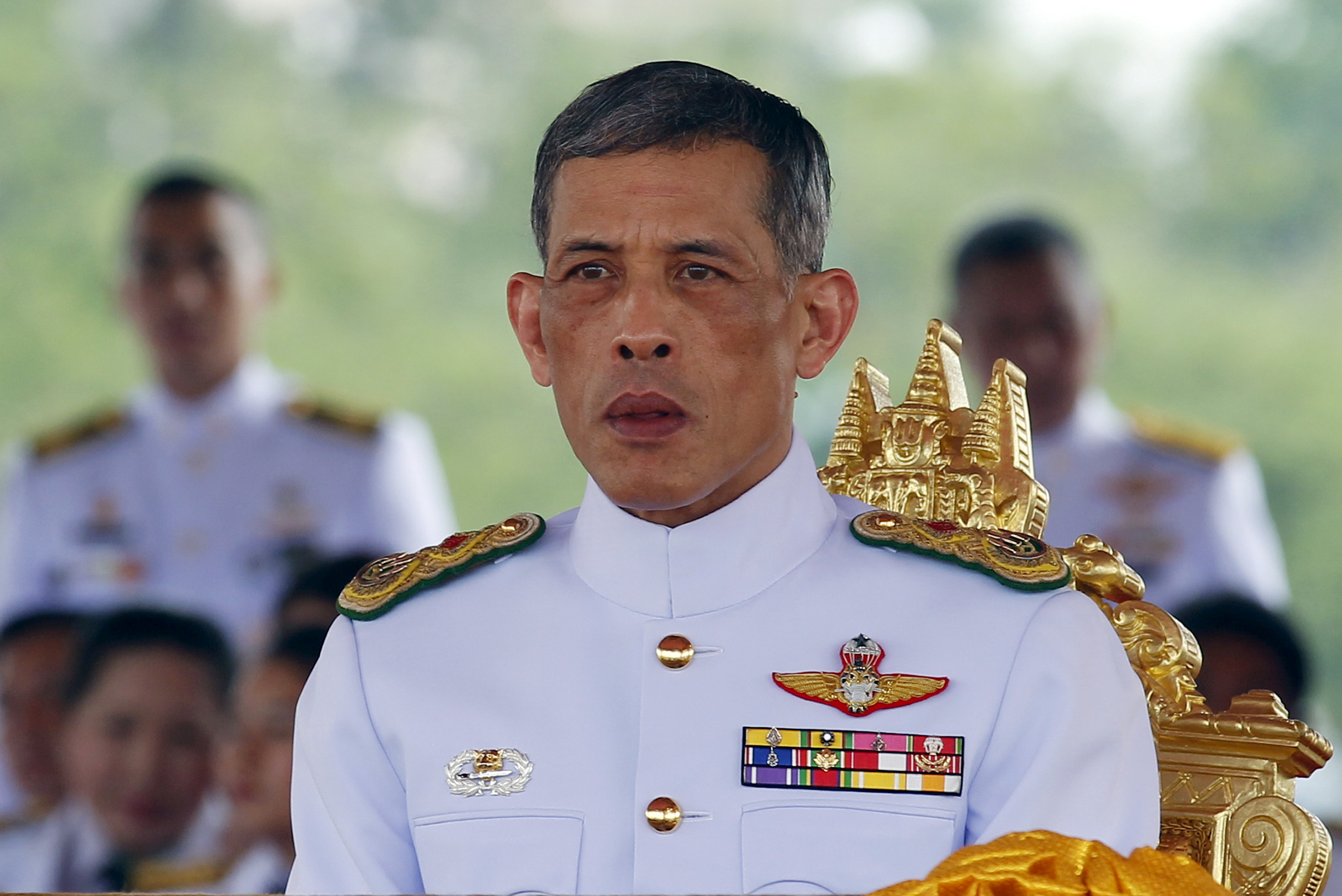
In 2016, the government held a referendum in which voters approved a constitution drafted by the military. Before the referendum, the military banned campaigning against the draft constitution and arrested dozens of activists. The draft constitution guaranteed the military a major political role that included appointing senators. King Vajiralongkorn signed the Constitution into law in 2017. The first parliamentary elections under the new Constitution were held in March 2019. The Pheu Thai Party and Palang Pracharat, the pro-military party, won the most votes. However, neither party won a majority of seats in the House of Representatives. With the military controlling the Senate, the parliament re-elected Prayuth Chan-ocha as prime minister.
In elections for parliament held in May 2023, a coalition of pro-democracy and antimilitary parties won the most seats in the House of Representatives. But the pro-military Senate blocked the coalition from forming a government. The Pheu Thai Party took over the coalition and nominated Srettha Thavisin, a businessman and close friend of the Shinawatra family, as prime minister. The parliament elected Srettha as prime minister in August.
